
Traditional queso dip contains moderate carbohydrates, averaging 7.3g net carbs per 100g serving due to cream, cheese varieties, and flour-based thickeners. Store-bought versions often include hidden carbs from preservatives and artificial ingredients, potentially adding 5-10g per serving. However, homemade keto-friendly alternatives can reduce carbs to approximately 2.7g per serving through strategic ingredient substitutions and proper preparation techniques. Understanding key modifications and cheese selection opens possibilities for creating lower-carb queso options.
Key Takeaways
- Traditional queso contains 7.3g net carbs per 100g serving, making it moderately high-carb due to cream, cheese varieties, and flour-based thickeners.
- Store-bought queso often contains hidden carbs from sugars and preservatives, adding 5-10 grams of net carbs per serving.
- Keto-friendly homemade queso can reduce carbs to 2.7g per serving by using low-carb thickeners and avoiding processed ingredients.
- Premium aged cheeses like cheddar contain fewer carbs (0.4g per ounce) compared to processed cheese products.
- Making queso low-carb requires substituting traditional thickeners with alternatives like xanthan gum and using unsweetened almond milk instead of cream.
Understanding Traditional Queso's Carb Content
When examining traditional queso's role in a low-carb diet, it's essential to understand its typical carbohydrate composition. Traditional queso contains approximately 7.3g of net carbs per 100g serving, which can greatly impact daily carbohydrate limits for those following a strict low-carb eating plan. The carb content in traditional queso stems from various sources, including cream, cheese varieties, and additional ingredients like flour-based thickeners. Commercial versions of low carb queso often incorporate fillers and preservatives that further increase the carbohydrate count. While homemade alternatives using ingredients such as unsweetened almond milk and pure cheese can reduce net carbs, portion control remains vital. Understanding these compositional factors helps individuals make informed decisions about incorporating queso into their low-carb lifestyle. For those seeking keto-friendly alternatives, high-fat dairy options like full-fat cheese are recommended, as they are low in carbs and enhance meal flavors while promoting satiety.
The Truth About Store-Bought Queso
Although store-bought queso dips offer convenience, their nutritional profiles often present challenges for individuals following low-carb diets.
Commercial queso products frequently contain hidden carbs, with many brands incorporating sugars and preservatives that can affect both blood sugar and cholesterol levels. Unlike homemade versions using natural ingredients like heavy cream and real cheese, packaged queso may contain thickeners and fillers that increase the carbohydrate content.
- Typical store-bought queso contains 7.3g net carbs per 100g serving
- Many brands use non-keto compliant thickeners and artificial ingredients
- Commercial queso often lacks the natural dairy fats found in homemade versions
For those committed to a low-carb lifestyle, carefully examining nutrition labels becomes essential when selecting store-bought queso. Many low-fat products have hidden sugars that disrupt ketosis, including light margarine and reduced-fat dressings that often include sweeteners.
Though making it at home offers better control over ingredients and carbohydrate content.
Breaking Down Queso's Nutritional Profile
Understanding queso's nutritional profile reveals significant differences between traditional and keto-friendly versions, with traditional queso containing nearly three times the carbohydrates of its low-carb counterpart. The selection of cheese varieties plays an essential role in determining the final carb count, as premium cheeses typically contain fewer fillers and stabilizers that can add unwanted carbohydrates. The strategic use of ingredients like xanthan gum and high-quality cheeses allows for a creamy, satisfying dip while maintaining the lower carbohydrate content necessary for ketogenic and low-carb dietary requirements. Incorporating keto-friendly brands can further help in achieving a low-carb queso that aligns with dietary goals.
Macronutrient Facts and Benefits
Traditional queso's nutritional profile presents a complex balance of macronutrients that requires careful consideration for those following a low-carb lifestyle.
While conventional queso contains approximately 7.3g carbs per serving, a KETO QUESO DIP alternative can reduce this to 2.7g, making it more suitable for ketogenic diets. The high fat content, particularly from cheddar cheese and heavy cream, aligns well with low-carb dietary goals.
- Traditional queso averages 7.3g net carbs per 100g serving
- Low-carb versions provide approximately 28g of beneficial fats per serving
- Xanthan gum can be used as a thickener without greatly impacting carb count
These macronutrient ratios make modified queso recipes an excellent option for those maintaining ketosis, provided they're made with appropriate ingredients and portion control is observed.
Cheese Selection Impact Carbs
When it comes to making low-carb queso, the selection of cheese varieties plays a pivotal role in determining the final carbohydrate content of the dish. High-quality, aged cheeses typically contain fewer carbohydrates compared to their processed counterparts, making them ideal choices for maintaining a low-carb profile.
Traditional queso ingredients like cheddar cheese contain approximately 0.4g of carbs per ounce, while Monterey Jack and Gruyere average around 1g per ounce. Adding cream cheese can enhance the dip's creaminess while contributing minimal carbohydrates, at roughly 1g per ounce.
To optimize the carbohydrate content of queso, it's essential to focus on cheese selection that avoids unnecessary fillers and preservatives. By choosing quality cheese varieties, the final dish can remain perfectly aligned with low-carb and ketogenic dietary requirements.
Making Queso Keto-Friendly: Key Substitutions
Making queso keto-friendly requires strategic ingredient substitutions that preserve the creamy, indulgent nature of this beloved dip while drastically reducing its carbohydrate content.
Transform your favorite cheesy dip into a keto sensation with smart swaps that keep the creamy decadence while slashing the carbs.
By replacing heavy cream with unsweetened almond milk and utilizing xanthan gum as a thickener, the serving size remains satisfying without compromising texture. High-quality cheese selections, added a handful at a time, guarantee peak melt and flavor ratings without excess carbs.
- Replace traditional dairy with unsweetened almond milk for creaminess
- Use xanthan gum instead of flour-based thickeners
- Substitute low-carb vegetables for traditional high-carb add-ins
For those following a ketogenic diet, it is essential to choose keto-friendly sweeteners like stevia or erythritol to ensure that the queso dip remains low in carbs while still satisfying any cravings for sweetness.
These modifications create a keto-compliant queso that maintains approximately 2.7g net carbs per serving, fitting comfortably within daily carb limits while delivering the indulgent experience queso lovers crave.
Best Cheese Options for Low Carb Queso
Selecting the right cheese varieties stands as the cornerstone of creating a successful low-carb queso dip. Cheddar and Monterey jack emerge as top choices, offering minimal carbohydrates while maximizing flavor. For best results, grating cheese from blocks rather than using pre-shredded options guarantees better melting qualities, as packaged shredded varieties often contain anti-caking agents that can interfere with texture. Adding cream cheese provides essential creaminess while maintaining low carb content. For those seeking more complex flavors, aged options like Gruyere or pepper jack can enhance the depth without increasing carbs. Dairy products provide low-carb, high-fat protein sources for keto diets, making them ideal for creating a delicious and compliant queso dip. Remember to subscribe your email address for follow-up comments on additional cheese recommendations. Using full-fat, high-quality cheeses consistently produces the smoothest, most satisfying queso while adhering to low-carb dietary requirements.
Hidden Carbs to Watch For in Queso
While queso may seem naturally low in carbohydrates, processed ingredients commonly found in commercial varieties can markedly increase the carb content. Many restaurant and store-bought queso dips rely on thickeners like flour, cornstarch, or modified food starch, which add unnecessary carbohydrates to the final product. These hidden sources of carbs, combined with potential additions like preservatives and sweeteners, make it essential for low-carb dieters to carefully examine ingredients or consider making their own queso at home. To maintain a low-carb diet effectively, it's advisable to focus on whole, unprocessed foods for better nutrition and to avoid hidden carbs in processed products.
Processed Ingredients Add Carbs
Although natural cheese contains minimal carbohydrates, commercially produced queso dips often harbor hidden carbs through processed ingredients and various additives.
Through careful grocery label analysis, consumers can identify problematic ingredients like modified food starch, artificial flavors, and corn syrup that greatly increase carbohydrate content. Proper ingredient sourcing and nutrition comparison between products reveals that preserved cheese dips frequently contain fillers and thickeners that contribute to higher carb counts.
- Modified food starch and preservatives can add 2-4g of carbs per serving
- High-fructose corn syrup and other sweeteners increase carb content unnecessarily
- Artificial thickeners often indicate the presence of additional carb-heavy ingredients
Understanding these processed additions helps consumers make informed decisions when selecting queso products for a low-carb lifestyle.
Thickeners Increase Net Carbs
Thickeners lurking in queso dips present a significant challenge for low-carb dieters seeking to maintain ketosis. Common thickening agents like cornstarch and flour can substantially increase net carbs, potentially disrupting ketogenic goals.
Commercial queso products often contain hidden sugars and starches that require careful label scrutiny.
For those following a low-carb lifestyle, keto alternatives offer viable solutions for achieving the desired queso consistency. Natural options such as cream cheese or pureed vegetables can serve as effective thickeners while keeping carb calculations in check.
When using xanthan gum, moderation is essential, as even small amounts can impact daily carb limits. Understanding these thickening choices helps maintain the creamy texture of queso while adhering to strict carbohydrate restrictions.
Restaurant Queso Contains Starches
Dining out presents a significant challenge for low-carb enthusiasts seeking to enjoy queso dip, as restaurant versions frequently harbor hidden starches that can derail dietary goals.
Understanding restaurant queso ingredients is essential, as establishments often incorporate flour, cornstarch, or modified food starch to achieve desired consistency and reduce costs. These hidden starch sources can add 5-10 grams of net carbs per serving beyond traditional homemade recipes.
- Many restaurants don't disclose thickeners used in their queso preparations
- Modified food starch and other fillers may appear under various names
- A single serving can contain double or triple the carbs of homemade versions
To maintain carb content awareness while dining out, customers should inquire about specific ingredients used in queso preparation and consider requesting nutrition information when available.
Portion Control Guidelines for Queso
Following portion control guidelines for queso is essential for anyone looking to maintain a low-carb lifestyle. To effectively manage carb intake, the recommended serving size is approximately 0.25 cups, containing roughly 3g of net carbs. Monitoring adjustments in your macro targets is necessary to stay aligned with your dietary goals, especially when consuming queso regularly. Understanding these portion control tips helps individuals stay within the keto-friendly range of 20g to 30g daily net carbs. Implementing moderation strategies, such as using a nutrition calculator and measuring portions consistently, enables better tracking of queso consumption. Serving size recommendations can be adjusted based on homemade recipes and specific ingredient choices, while pairing queso with low-carb alternatives like vegetables or keto-friendly chips helps maintain carb limits. Regular measurement of portions prevents overconsumption and supports long-term dietary success while still enjoying this popular cheese dip.
Low Carb Dipping Alternatives
When exploring low carb dipping alternatives for queso, health-conscious individuals can choose from numerous delicious options that maintain the enjoyment of this popular cheese dip while adhering to dietary restrictions.
For those seeking veggie dipper options, fresh vegetables like celery, cucumber, and mini peppers provide satisfying crunch and nutritional benefits. Protein-rich alternatives include Mexican meatballs and pork rinds, which complement queso's creamy texture while keeping carbs low.
For crunchy snack choices, specially formulated products like Quest chips, Whisps, and low carb tortilla chips offer familiar textures without compromising dietary goals.
- Fresh, crisp vegetables deliver essential nutrients while serving as perfect vessels for queso
- Protein-focused options add sustenance and help maintain satiety
- Specialty low carb chips and crisps satisfy the desire for traditional tortilla chips
- Zucchini chips offer a low-calorie, carb-friendly option, baked until crispy with seasonings, to enjoy with queso without guilt.
Recipe Tips for Homemade Low Carb Queso
Creating delicious homemade low carb queso requires careful attention to ingredient selection and preparation techniques to maintain authentic flavor while minimizing carbohydrate content. When considering cheese pairings, opt for high-quality cheddar and Gruyere combinations, which deliver rich taste while keeping carbs low. For best flavor enhancements, start by sautéing garlic and jalapeño as a flavorful base, then incorporate unsweetened almond milk for creaminess. Xanthan gum serves as an effective thickening agent without adding unnecessary carbohydrates. Many keto-friendly coffee creamers are also low in carbs, featuring less than 3g of carbohydrates per serving. For serving suggestions, portion control plays a vital role in maintaining carb limits. Measure servings at approximately 0.25 cup, containing roughly 3g of net carbs. This controlled portion size allows enjoyment of the dip while staying within keto-friendly parameters, making it an ideal choice for low-carb lifestyle adherents.
Common Mistakes When Making Keto Queso
When crafting keto queso, several key mistakes can derail the final product, including the misuse of heavy cream proportions and incorrect cheese selection. The choice of cheese greatly impacts the texture and flavor, with pre-shredded varieties containing anti-caking agents that can prevent proper melting and affect the overall quality. Temperature control plays an essential role, as excessive heat can cause separation and graininess, while insufficient heat may result in improper melding of ingredients. Additionally, selecting healthy fats like olive oil can enhance the flavor and nutritional quality of your queso, ensuring it remains keto-friendly.
Using Too Much Cream
Many keto dieters fall into the trap of adding excessive cream to their queso dip, believing more cream equals better results.
However, maintaining proper cream balance tips is vital for achieving the ideal queso consistency control while avoiding excess fat concerns. To create a well-balanced keto queso, start with smaller amounts of cream and adjust gradually until reaching the desired thickness.
- Too much cream can overwhelm the cheese flavors and create an unnecessarily rich texture.
- Excessive cream increases caloric density, potentially disrupting daily macro targets.
- Over-creaming can result in a runny consistency that doesn't properly coat keto-friendly dippers.
Wrong Cheese Selection Process
The selection of cheese stands as a foundational element in crafting authentic keto queso dip, with common mistakes often derailing even well-intentioned preparation efforts. A vital cheese quality impact comes from choosing pre-shredded varieties, which contain added starches that increase carb content unnecessarily.
Instead, selecting and grating block cheese guarantees better control over carbohydrate intake while maximizing flavor potential.
Understanding moisture balance importance is significant, as different cheese varieties contribute varying levels of moisture to the final dip. Combining cheeses thoughtfully, such as pairing cheddar with Gruyere, creates an ideal texture while adding depth of flavor.
Additionally, mastering seasoning techniques tips involves incorporating fresh ingredients like garlic and jalapeños, along with appropriate spices, to enhance the dip's taste profile without compromising its keto-friendly status.
Improper Temperature Control
Temperature control serves as a critical factor in achieving the perfect keto queso consistency, with improper heat management often leading to separated fats and unappetizing textures.
When preparing queso, mastering temperature regulation techniques guarantees proper cheese melting methods and prevents the separation of fats. Understanding queso preparation tips, such as maintaining low, consistent heat and adding freshly grated cheese gradually while stirring continuously, can make the difference between a smooth, creamy dip and a greasy mess.
- Keep heat consistently low throughout the melting process to prevent fat separation
- Add cheese gradually while stirring constantly to guarantee even melting and incorporation
- Use freshly grated cheese instead of pre-shredded varieties to achieve ideal melting properties
Storing and Reheating Your Low Carb Queso
Properly storing and reheating low carb queso guarantees its creamy texture and rich flavors remain intact for multiple servings. Various storing methods guarantee peak preservation, while proper reheating techniques prevent texture degradation. After cooling completely, transfer the queso to an airtight container for refrigeration up to one week.
| Storage Type | Duration | Texture Preservation |
|---|---|---|
| Refrigerator | 1 week | Excellent |
| Freezer | 3 months | Fair |
| Room Temp | 2 hours | Good |
| Reheated | Same day | Variable |
When reheating, use low heat on the stovetop or 30-second microwave intervals, stirring between cycles. Add water or heavy cream to restore creaminess if needed. While freezing is possible, fresh consumption provides the best texture, as thawing may alter the queso's consistency.
Health Benefits of Low Carb Queso Ingredients
Beyond its storage considerations, low carb queso offers substantial nutritional advantages through its carefully selected ingredients. The health benefits stem from thoughtful ingredient sourcing, combining high-quality cheeses rich in calcium and protein with beneficial fats from cream cheese and heavy cream.
Strategic flavor enhancements like cumin and jalapeño contribute anti-inflammatory properties while improving the overall taste profile.
- Premium cheeses provide essential nutrients for bone health and muscle maintenance, supporting overall physical well-being.
- Healthy fats from dairy components promote satiety and sustained energy levels, making it suitable for weight management goals.
- Natural spices and herbs deliver both therapeutic properties and enhanced taste without adding unnecessary carbohydrates.
The incorporation of alternative ingredients like unsweetened almond milk and xanthan gum maintains the desired texture while keeping carbohydrate content minimal.
Frequently Asked Questions
Does Queso Have a Lot of Carbs?
Traditional queso types generally contain significant carb content, averaging 7.3g net carbs per 100g serving. The nutritional value varies among recipes, making most varieties unsuitable for strict low-carb diets.
What to Eat With Queso on Keto?
Popular keto-friendly dipping options for queso include low-carb tortilla chips, fresh vegetables, pepperoni chips, Mexican meatballs, and low-carb crackers, providing satisfying snacks while maintaining ketogenic dietary requirements.
Does Queso Sauce Have Carbs?
Queso sauce contains carbs due to its ingredients. The carb content varies based on the recipe, with traditional queso containing around 7.3g net carbs per 100g serving, affecting its nutritional value.
Is Cheese in Queso?
Queso fundamentally contains cheese as its primary ingredient. Traditional queso recipes incorporate various cheese varieties like cheddar, Monterey Jack, or American cheese, offering nutritional benefits including protein and calcium.
Conclusion
Traditional queso can be adapted into a satisfying low-carb option with thoughtful ingredient substitutions and proper preparation techniques. By choosing the right cheese varieties, thickeners, and add-ins, food enthusiasts can create creamy, flavorful queso that fits within ketogenic and low-carb dietary requirements. Whether made from scratch or modified from store-bought versions, low-carb queso offers a versatile way to enjoy this beloved dip while maintaining nutritional goals.
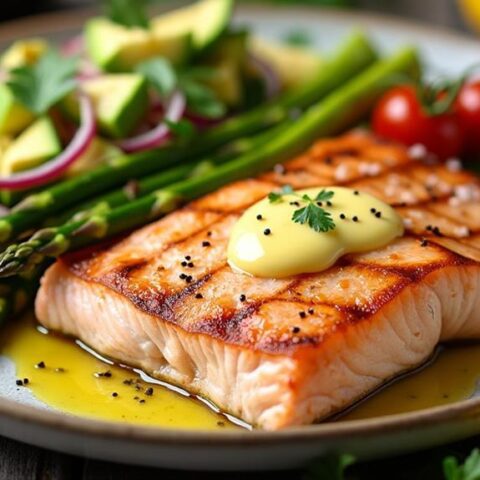
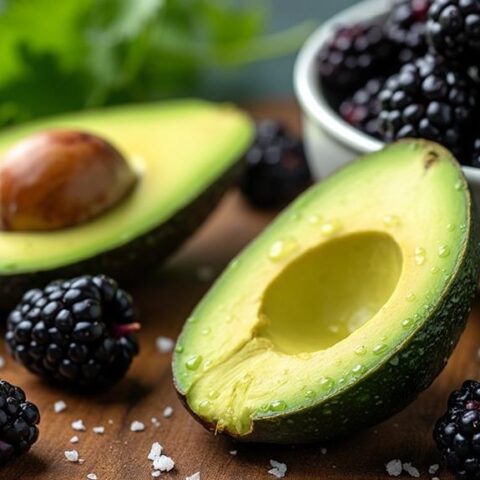
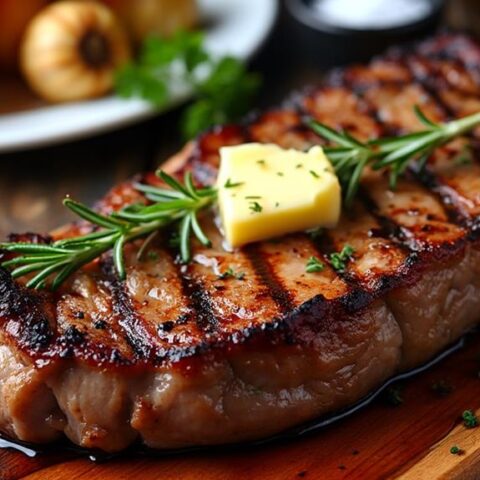
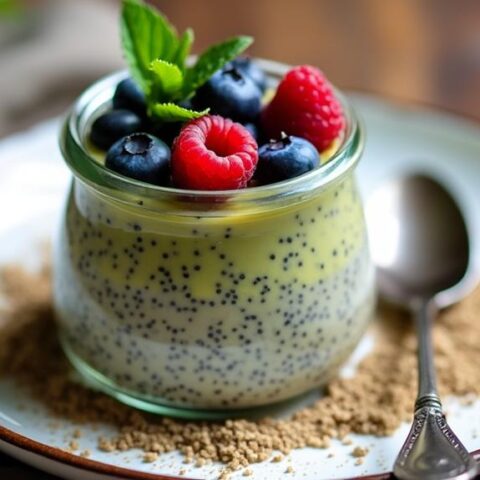


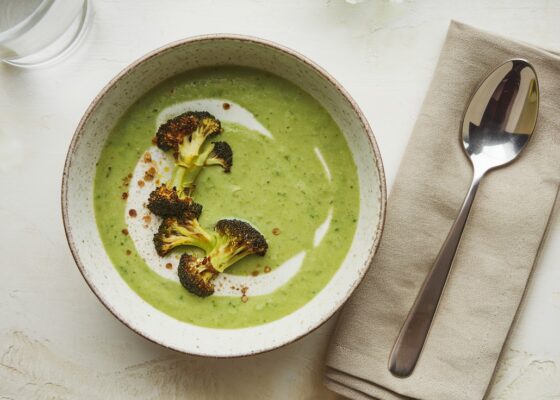

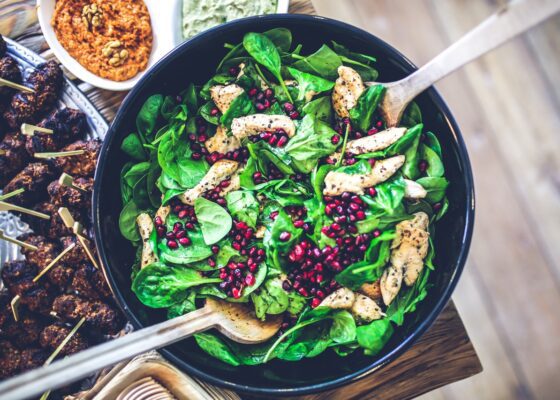

No Comments